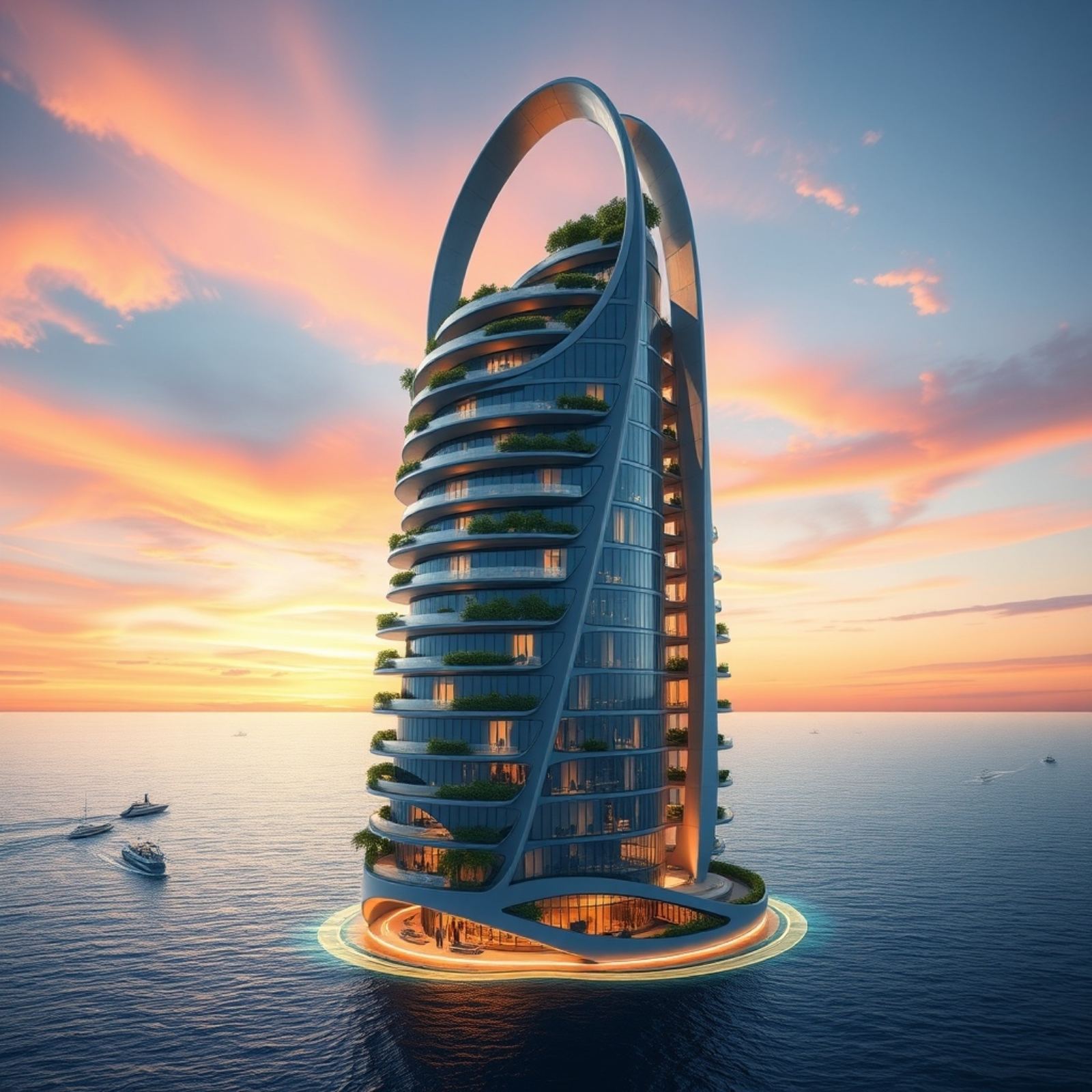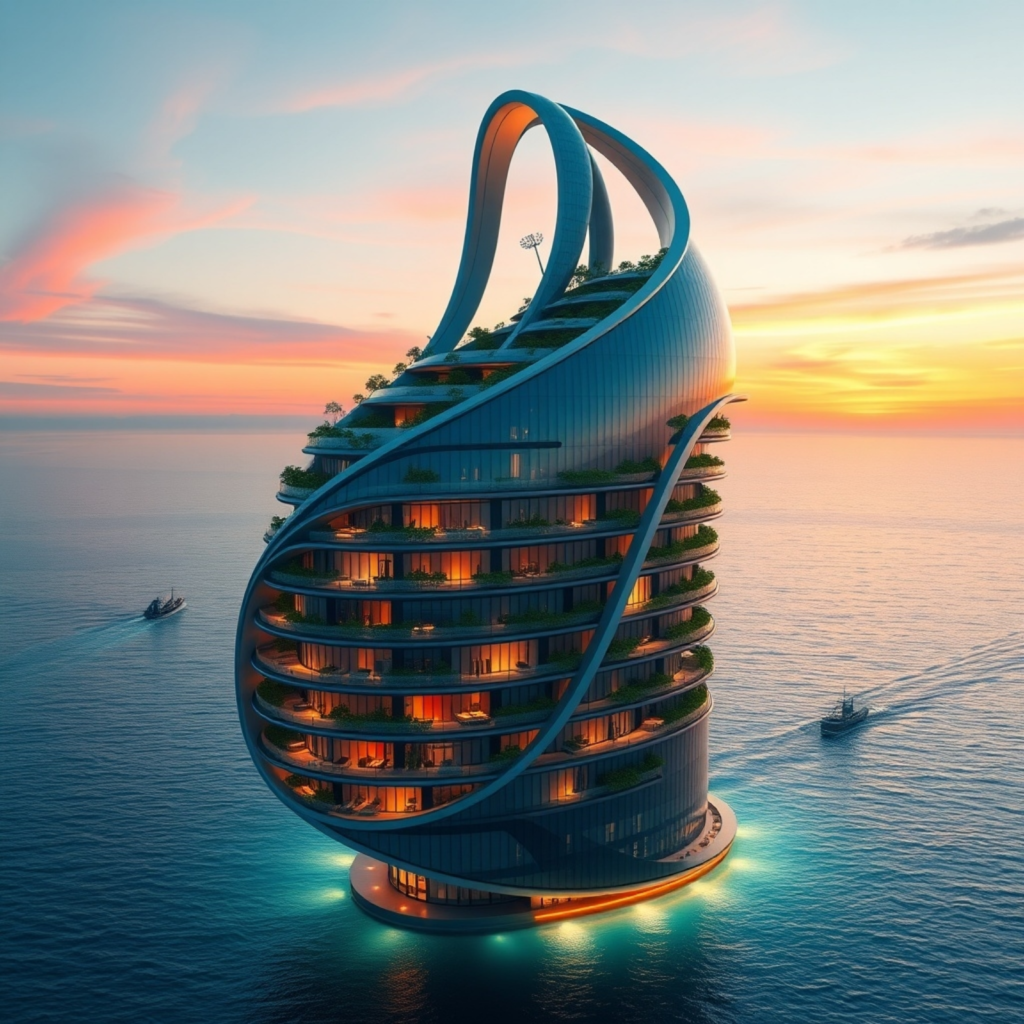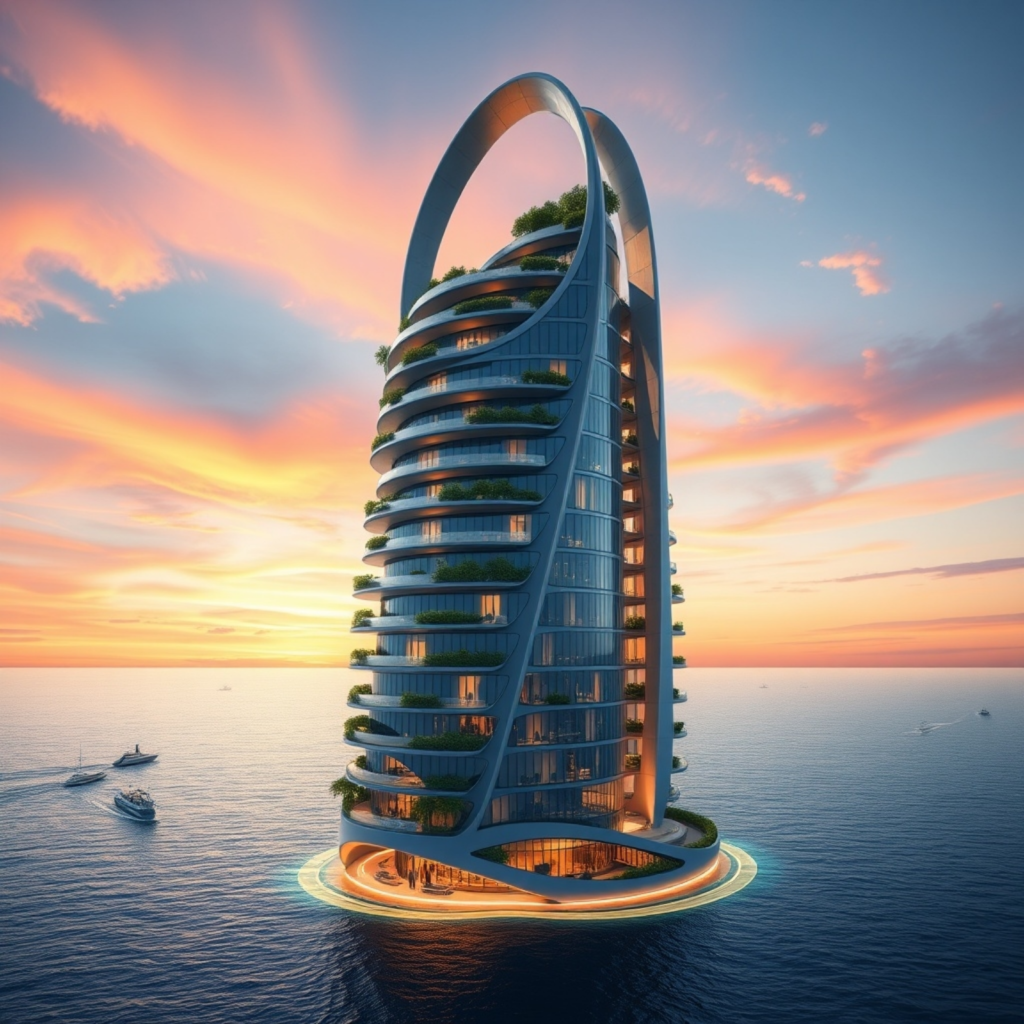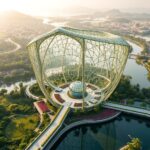

Introduction:
In a world increasingly aware of the limitations of land-based urban growth and the looming threats of rising sea levels, architects are turning to an age-old resource for innovation—water. Floating architecture is rapidly gaining momentum as the future of urban living. These architectural marvels offer both luxury and sustainability, merging cutting-edge design with eco-friendly solutions. At www.archixpert.com, we explore the most stunning examples of this emerging trend, focusing on the beauty, innovation, and potential of floating structures.
The Rise of Floating Architecture:
The concept of floating architecture is not entirely new. Throughout history, communities in regions like the Netherlands, the Maldives, and even parts of Southeast Asia have embraced water as a foundation for their homes. However, what’s new is the scale, sophistication, and vision of modern floating structures. Today, architects are reimagining what’s possible, designing towering structures that float seamlessly on water, combining aesthetic elegance with sustainability.
Floating architecture presents a solution to urban overcrowding, climate change, and rising sea levels. As cities expand and usable land becomes scarcer, floating structures offer a unique alternative. These innovations are not just functional; they are becoming icons of futuristic urban design.
Key Architectural Features of Floating Towers:
1. Sustainability at the Core
Floating towers are built with a strong emphasis on sustainability. The materials used are often eco-friendly, including solar panels, green roofs, and energy-efficient glass facades. These towers generate a portion of their energy requirements through solar power, harness the wind for ventilation, and sometimes even incorporate water filtration systems to process and reuse seawater.
2. Integration with Nature
A prominent theme in floating architecture is the seamless integration with nature. From curving facades that mimic ocean waves to expansive terraces adorned with greenery, these buildings are designed to coexist with their natural surroundings rather than disrupt them. The organic forms seen in many of these structures not only enhance their aesthetic appeal but also improve their stability on water.
3. Luxury Meets Innovation
Floating towers are often synonymous with luxury. They offer breathtaking ocean views, state-of-the-art amenities, and smart home systems, making them highly desirable for modern urbanites. The designs are futuristic, boasting sleek lines, expansive glass walls, and curvilinear forms that challenge the conventions of traditional skyscrapers.
Featured Floating Towers: A Closer Look
At www.archixpert.com, we present the latest in architectural marvels that are pushing the boundaries of floating architecture. Let’s take a closer look at a few standout examples:

1. Sunset Haven: A Modern Floating High-Rise
This high-rise stands out not only for its height but for its seamless blend of luxury and sustainability. Its circular terraces are adorned with lush greenery, allowing residents to feel immersed in nature while enjoying all the modern comforts of a high-end lifestyle. The building’s design maximizes natural light, enhancing the panoramic ocean views from every angle.

2. Twist of Innovation: A Floating Tower on Water
Pushing the boundaries of what’s possible in water-based architecture, this twisting tower redefines urban design. Its curved, organic form allows it to blend harmoniously with the surrounding ocean while providing a strong foundation for luxury living. Each floor offers an open, airy design with eco-friendly features that reduce the building’s carbon footprint.

3. Curved Elegance: Floating Tower at Dusk
An architectural masterpiece, this curved floating tower presents a vision of the future. With its eco-conscious design and innovative use of space, it symbolizes a balance between luxury and responsibility. The curved silhouette of the tower not only enhances its aesthetic appeal but also improves its aerodynamic efficiency in wind and water conditions.

4. Ocean Tower of Tomorrow: A Glowing Marvel
Glowing with ambient lighting, this floating tower serves as a beacon of futuristic architecture. It harnesses the energy of the sun and water to maintain its eco-friendly operation. Its elegant, flowing design draws inspiration from natural forms, standing as a testament to how far sustainable architecture has come.
Challenges and Future Prospects:
While the rise of floating architecture is exciting, it is not without challenges. From the engineering complexities of building on water to the environmental concerns of disturbing marine ecosystems, architects must find ways to create structures that are as responsible as they are revolutionary. However, with ongoing technological advancements and increased attention to sustainability, floating architecture will likely continue to evolve and grow.
As cities around the world grapple with the realities of climate change and overpopulation, floating towers may very well become a key solution. Offering both luxury and sustainability, these futuristic structures represent a new frontier in architecture—a harmonious blend of design, innovation, and environmental consciousness.
Conclusion: A Glimpse Into the Future
Floating architecture isn’t just a trend; it’s a glimpse into the future of urban development. With its eco-conscious design, cutting-edge materials, and integration with nature, these floating towers represent the pinnacle of modern innovation. At www.archixpert.com, we remain committed to showcasing the latest and most exciting developments in this architectural revolution. As architects continue to push the boundaries, the dream of living luxuriously on water is closer to reality than ever before.





